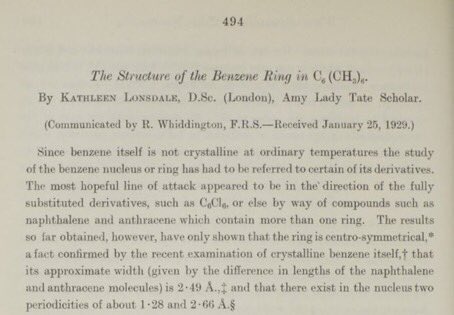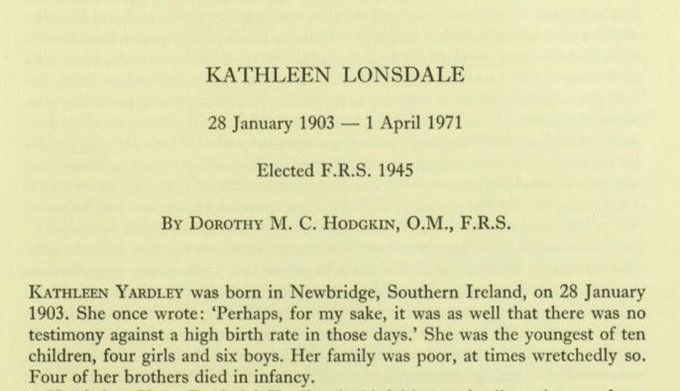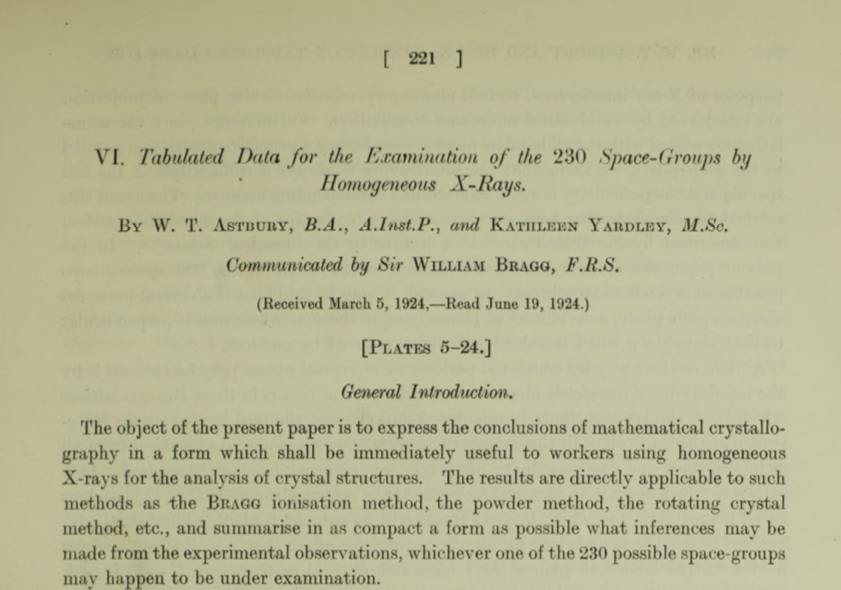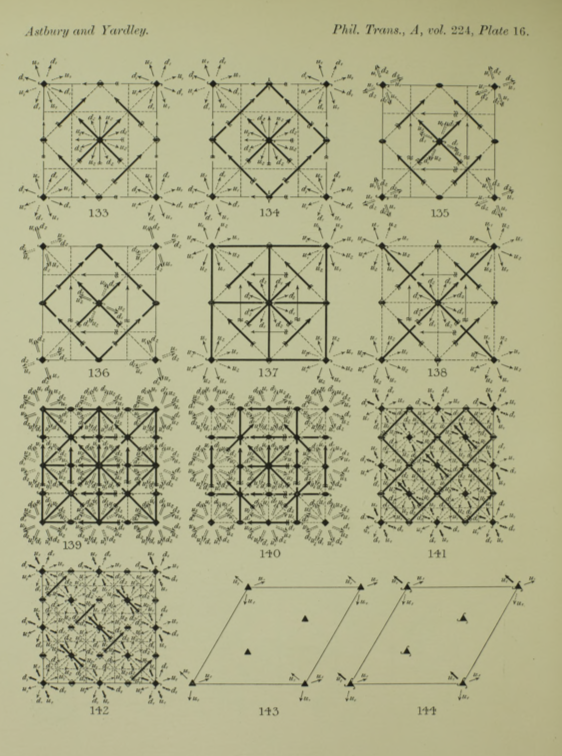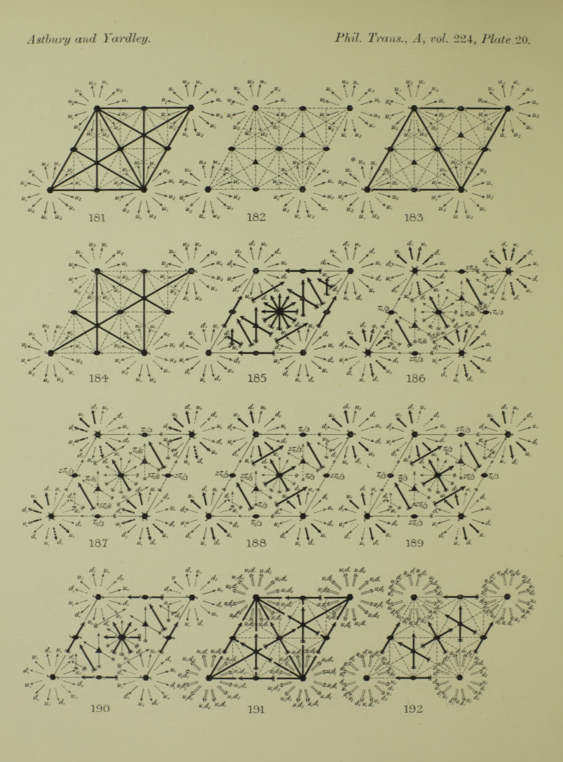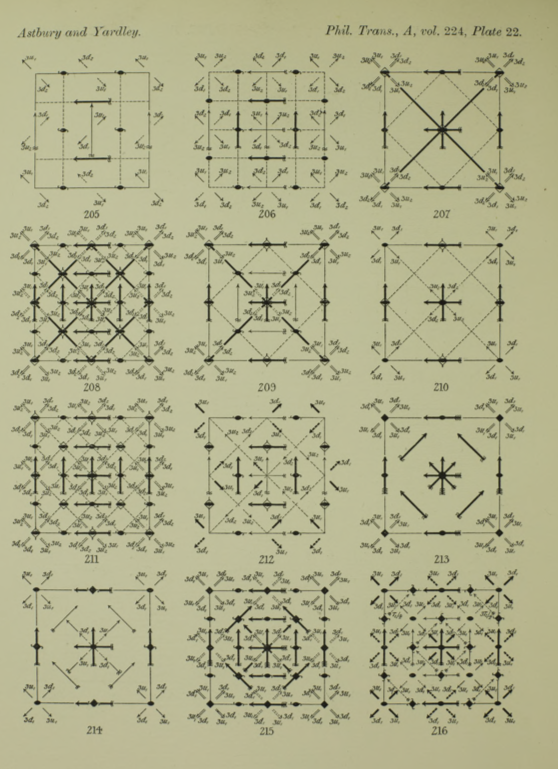Irish physicist Kathleen Yardley Lonsdale was born #OTD in 1907. She pioneered the used of X-ray diffraction to study the structure of crystals; one of her earliest results showed that Benzene's ring structure is flat.
Image: University of Kent
Image: University of Kent
Lonsdale joined William Bragg's crystallography team at the Royal Institution ( @Ri_Science) in 1924 and published her work on Benzene in 1929. Bragg thought the benzene ring was bent, like diamond. But Lonsdale showed that it is flat like graphite.
https://royalsocietypublishing.org/doi/abs/10.1098/rspa.1929.0081?cct=1790
https://royalsocietypublishing.org/doi/abs/10.1098/rspa.1929.0081?cct=1790
Lonsdale was one of the pioneers of using X-ray diffraction to study crystal structure. The Royal Institution has a copy of her *handwritten* crystallography textbook. This isn't a lab notebook — it's a complete textbook, written by hand. https://twitter.com/ri_science/status/878199505342083072
She wrote it out by hand because typewriters didn’t have the special characters she needed!
Lonsdale was a committed pacifist, and she and her husband became Quakers. As a mother of 3 young children she was exempt from contributing to war efforts during WWII. But she refused to register out of principle, went to court over it, and was sent to prison for a month.
Conditions in Holloway Prison were abysmal, and Lonsdale became an activist for prison reform. During the month in 1943 that she spent in prison, a group of scientists (led by Lawrence Bragg, the son of her former boss) nominated her for election to the @royalsociety.
Their campaign was successful, and in 1945 Kathleen Lonsdale and biochemist Marjory Stephenson became the first women elected fellows of the Royal Society.
https://royalsocietypublishing.org/doi/10.1098/rsbm.1975.0014
https://royalsocietypublishing.org/doi/10.1098/rsbm.1975.0014
Let me mention one other important publication by Kathleen Yardley Lonsdale.
Early in her career, while still a graduate student, she produced a phenomenally useful publication with her colleague William Astbury. It's a collection of data to aid in the x-ray analysis of crystal structures.
Because crystals are made up of repeating 3-d structures, you can illuminate them with monochromatic x-rays and get a well-defined diffraction pattern. Working backwards from the diffraction pattern you can infer the structure of the crystal.
But there are lots of ways you can stack together repeating blocks in three dimensions with the sorts of symmetries you see in crystals. Mathematically they are characterized by what we call "space groups," and there are 230 of them.
Yardley (this is before she married) and Astbury tabulated a comprehensive reference detailing the x-ray diffraction properties of *all 230 space groups*, in a form that could be applied by other scientists doing this sort of work.
https://royalsocietypublishing.org/doi/pdf/10.1098/rsta.1924.0006
https://royalsocietypublishing.org/doi/pdf/10.1098/rsta.1924.0006
X-ray crystallography was becoming a mature and essential tool, and this was precisely the sort of info that researchers needed to have at hand. But also, the figures were just 






 Read on Twitter
Read on Twitter
